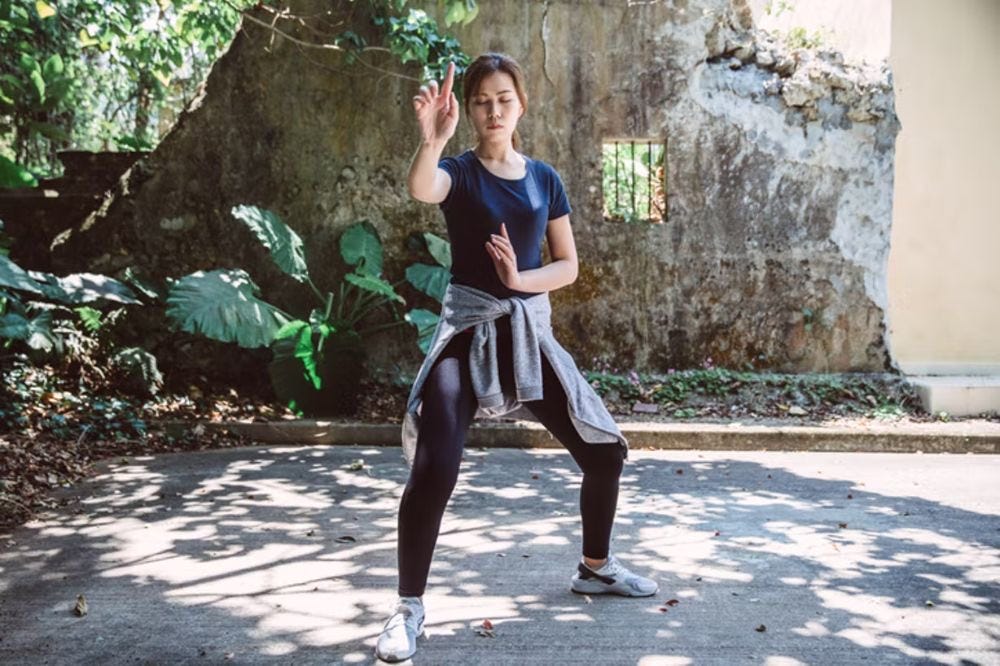Beginner’s Guide to Chinese Medicine Modalities: Part Three
Exercise, Diet, and Meditation
In Part One and Two we covered Herbs, Acupuncture, Moxa and Body Work. Today we’ll finish the Chinese Medicine Modalities with some of the most obvious and also neglected aspects of the medicine — and what many patients want to avoid: homework!
We all know that living a healthy life starts at home, from eating well, to sleeping well, to exercising appropriately, having healthy relationships, and a balanced social and personal life. The trouble for so many, is that they are stuck in their habitual patterns and don’t want to make changes. After all, our modern society has many flaws and fundamentally has been set up for stress and dis-ease. Hustle culture, processed foods, side effects of electricity and artificial light, a high burden of stress and toxins, city life in general, etc. are all separation from the Earth and natural rhythms, which gradually creates disease. We can see this by the staggering numbers of chronic illness in North America today. Our grandparents might have been doing okay with the leap into more artificial ways of living, but with each generation the impact becomes more concentrated in our cells, and tech continues to advance and separate us from natural ways of living. So back to the basics of Natural Medicine: moving the body, eating well, and slowing down enough to be mindful and meditative.
3. Exercise, Diet, Meditation: Least Invasive, But Requires Discipline
Exercise is to be encouraged especially in spring and summer months. While walking is recommended for everyone, more vigorous activity may be encouraged or discouraged based on the patient’s condition.
Qi Gong 氣功
Falling somewhere in between meditation and martial arts, Qi Gong is simply a practice of breathing and movement to amplify and regulate Qi. It translates roughly to “vital energy” + “achievement” or “service,” so we can say that by practicing Qi Gong, we are serving our bodies and achieving something very special. Qi Gong is more active than a seated meditation, and less intense than martial arts. It consists of postures and movements especially of the hands and arms, and timed breathing. It can be used for specific goals, self-healing, self-cultivation, or general health maintenance.
Food therapy - Shí Liáo 食療
Nutrition is the foundation of health and both individual foods and the overall dietary habits have an important role in medicine, just as they do in every day wellness. Chinese Food Therapy, just like Chinese herbs, are understood in terms of the energetic properties of foods as opposed to their nutrients. In Western nutrition, we say that foods have certain macronutrients (proteins, fats, and carbohydrates), micronutrients (vitamins, minerals, fibre, water, and other compounds like antioxidants) and even anti-nutrients. In Chinese medicine, we often say that a food is warming or cooling, but foods fall on a spectrum of “temperatures” as well as have important directional qualities, colours, flavours, and shapes, and target specific organs. Because its complexity, food therapy can be practiced on its own, but it is a vital part of Chinese Medicine. Most acupuncturists will mention at least some food recommendations to their patients.
Yang Sheng - 養生
Yang Sheng — translated to “nourishing life” or “cultivate good health” — is the intention, practices, and habits which maintain good health and create longevity. We all know that eating well, exercising, getting enough sleep, and minimizing bad habits such as drinking and smoking, will help us to live longer. But the concept of Yang Sheng takes it a step further. It places an emphasis on a peaceful mind and the intention to be well and to cultivate an abundance of health which will last a lifetime. In fact, it is Yang Sheng, and not acupuncture that is the most important preventative medicine.
While food therapy and Qi Gong are a part of Yang Sheng, as a whole it becomes its own practice. Yang Sheng involves the nourishing meals, the mindful cups of herbal tea, acupressure massage, foot soaks, exercises, meditations, breathing, visualization and even unique practices such as teeth tapping. Falling in between, body work and exercise are also philosophical or self development work, such as cosmology and religion, as well as analysis of home life and environmental factors such as in Feng Shui. All in all, Yang Sheng or the more subtle and proactive medicines, asks us to be present, grateful, self-responsible, and striving towards wellbeing. These are not only indulgent “self-care” practices we see advertised, but the every day things that we must do to be our best selves — and much of it is free.
Did you know that these are fundamental aspects of Chinese Medicine?
Thank you so much for subscribing and reading this article! Let me know if you learned something new, or if you have had any experiences with receiving “homework” from your Chinese Medicine Practitioner. Or if you’re a practitioner, how do your patients respond to your recommendations?
As always, please “like” this article and share it with a friend!






